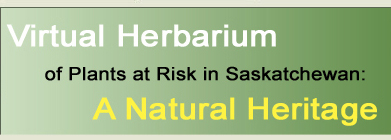
|

|

|

|

|

|

|
|
|
|
|
|
| Antennaria dimorpha (Nutt.) Torr. & Gray | Species Image Gallery (opens in a new window) |
||||||||||||||||||||||||||||||||||||||||||||||||||||||||||||||||||||
| TAXONOMY | |||||||||||||||||||||||||||||||||||||||||||||||||||||||||||||||||||||
| Family: | Asteraceae or Compositae | ||||||||||||||||||||||||||||||||||||||||||||||||||||||||||||||||||||
| Genus: | Antennaria | ||||||||||||||||||||||||||||||||||||||||||||||||||||||||||||||||||||
| Species Synonyms: | Antennaria dimorpha var. integra
Henderson Antennaria dimorpha var. latisquama (Piper) M.E. Peck Antennaria dimorpha var. macrocephala D.C. Eat Antennaria latisquama Piper Antennaria macrocephala (D.C. Eat) Rydb. Gnaphalium dimorphum Nutt. |
||||||||||||||||||||||||||||||||||||||||||||||||||||||||||||||||||||
| Common Names: | low everlasting low pussytoes cushion pussytoes |
||||||||||||||||||||||||||||||||||||||||||||||||||||||||||||||||||||
| DISTRIBUTION | |||||||||||||||||||||||||||||||||||||||||||||||||||||||||||||||||||||
| Canada: | British Columbia – southwestern Saskatchewan | ||||||||||||||||||||||||||||||||||||||||||||||||||||||||||||||||||||
| Saskatchewan: | southwestern Saskatchewan; Leader, Eastend, Killdeer | ||||||||||||||||||||||||||||||||||||||||||||||||||||||||||||||||||||
| Ecoregion: | Cypress Upland, Mixed Grassland | ||||||||||||||||||||||||||||||||||||||||||||||||||||||||||||||||||||
| HABITAT | |||||||||||||||||||||||||||||||||||||||||||||||||||||||||||||||||||||
| Saskatchewan: | dry sand, silt, gravel or clay in short-grass prairie | ||||||||||||||||||||||||||||||||||||||||||||||||||||||||||||||||||||
| Associated species: | Allium textile, Antennaria parvifolia, Arenaria congesta, Arnica fulgens, Astragalus pectinatus, Senecio integerrimus, Selaginella densa, Townsendia exscapa | ||||||||||||||||||||||||||||||||||||||||||||||||||||||||||||||||||||
| RARITY STATUS | |||||||||||||||||||||||||||||||||||||||||||||||||||||||||||||||||||||
| Provincial
Status According to Harms (2003): |
Threatened |
||||||||||||||||||||||||||||||||||||||||||||||||||||||||||||||||||||
| Nature Conservancy Status: | G5 S2 |
||||||||||||||||||||||||||||||||||||||||||||||||||||||||||||||||||||
| Saskatchewan
Species at Risk Status: |
None |
||||||||||||||||||||||||||||||||||||||||||||||||||||||||||||||||||||
| COSEWIC Status: | None |
||||||||||||||||||||||||||||||||||||||||||||||||||||||||||||||||||||
| Antennaria dimorpha is threatened because of rarity. This plant is regionally restricted in Saskatchewan. No immediate threats are known but are possible in the future. | |||||||||||||||||||||||||||||||||||||||||||||||||||||||||||||||||||||
| SPECIES DESCRIPTION | |||||||||||||||||||||||||||||||||||||||||||||||||||||||||||||||||||||
| Height: | 1 – 5 cm tall | ||||||||||||||||||||||||||||||||||||||||||||||||||||||||||||||||||||
| Stems: | caudex branched; stems perennial, densely caespitose, mat forming, stolons absent, greyish-tomentose | ||||||||||||||||||||||||||||||||||||||||||||||||||||||||||||||||||||
| Leaves: | basal and cauline; basal leaves erect, 1 – 4 mm wide, tapering to petiole-like base, tip acute; cauline leaves well-developed, 1 – 3 cm long, linear to lanceolate, gray tomentose on both sides | ||||||||||||||||||||||||||||||||||||||||||||||||||||||||||||||||||||
| Inflorescence: | dioecious, solitary; staminate heads: phyllaries 5 – 7 mm, colourless and hyaline at margins and apex, otherwise blackish green or brown; pistillate heads: phyllaries 10 – 15 mm high, narrow, slender, tinged with brown or reddish-brown, margin whitish at apex | ||||||||||||||||||||||||||||||||||||||||||||||||||||||||||||||||||||
| Flowers: | corolla white; staminate pappus bristles upwardly barbellate | ||||||||||||||||||||||||||||||||||||||||||||||||||||||||||||||||||||
| Fruits: | achene 3 mm long, puberulent, olive coloured; pappus long, white | ||||||||||||||||||||||||||||||||||||||||||||||||||||||||||||||||||||
| |||||||||||||||||||||||||||||||||||||||||||||||||||||||||||||||||||||